Every year, February trips over into March and takes me by surprise. Only two or three days shorter than any other month, it shouldn't feel any different, but it disrupts the usual pattern. It's a getting real, getting ready month, as I prepare to start teaching for the year, and finally submit to the fact it is 2025.
Early on in 2022 when I was writing Calendar I decided I would use numbers, 1-365, rather than dates. I wanted it to be a calendar - a structure for organising days - rather than a daybook that was attached to specific dates with all their associations. When January was over and I proceeded with object 32, it came with a feeling that I was breaking free, committing to making something new.
I know the year as objects, I know it as numbers. I am writing this on the 53rd day of the year. The sun is out and when I go into the yard to rake up some leaves, I find a tiny soft rainbow feather that springs into vibrant colour when the light catches it. Objects are still appearing daily for me. Maybe now they always will.
Object of the Month (in which I expand on some of the objects I write about in Calendar)
Perkins Paste
Object 34 is a pink plastic pot with a cracked white lid, and item recognisable to people who went to school in Australia up to the 1980s - or maybe even only NSW? I'm not sure how far its distribution extended. The paste was made in a factory in western Sydney, on a street that now has auto repair shops and fibreglass and flooring factories. The address was printed on the label, as well as rosettes that proudly announced 'Since 1934'.
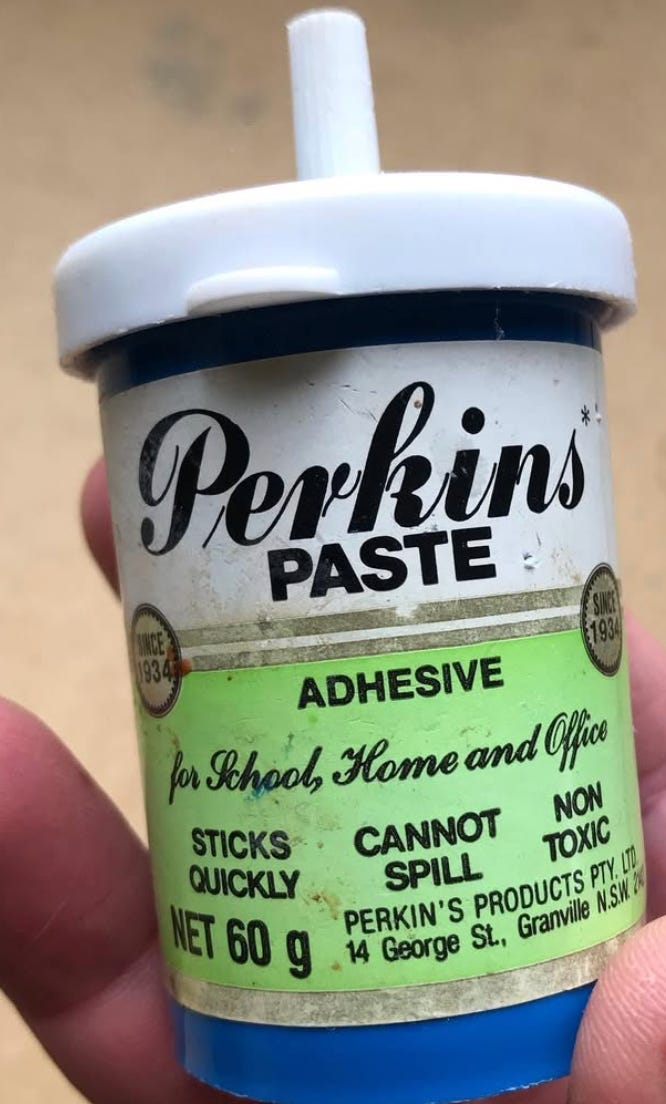
The glue stopped being made sometime in the 1980s, making me the last of the Perkin's Paste generation. Even without the 1934 rosettes it had seemed like a product from another time, and as a child such anachronistic things appealed to me. Perhaps it was because I spent so much time with my grandparents, in their house full of objects from before I was born, that I had this affinity. I can't say for sure, but this attraction to objects of the past has been a part of me ever since. Now the objects of the past include many from my own lifetime.
The paste was a white jelly that smelled of almonds but was made out of potato starch. You smeared it on the back of whatever you were seeking to affix using a white spatula on the underside of the lid. It stuck fast for a while, but over time would dry and crumble. The label said 'Non Toxic', but it could have very well said 'Edible', because that was the use many children put it to.
In a few more years it was the 1990s and I was a teenager. One day, walking along Oxford Street, I came upon an unusual department store called REMO. It stocked a careful selection of practical and novelty items, among them pens that could write in space, striped Breton shirts, chocolate sardines, Fortune Teller Miracle Fish, and t-shirts printed with the Perkin's Paste logo. Seeing this shirt was perhaps the first time I encountered nostalgia for a product from my own past. It was an early instance, too, of me recognising the phenomena whereby the thing you think only you notice, you realise others do to.
My Perkin's Paste pot is missing the label, but I well remember the crimson pink tub with white lid and how it was to pop it open, releasing the marzipan smell of the glue. I found the empty pot in the early 2000s among a collection of back-shed items in an op shop, priced at 20c. A find! Occasionally I had searched for Perkin’s Paste on Ebay. Results came up sometimes, but then I was not in a position to spend the $50 I remember one seller charging for a pot of dried up glue ($50 was a lot, then). Since I acquired the Perkin’s Paste pot the lid has cracked in multiple places, the plastic wearing out like the glue used to so quickly, and I would imagine there are very few of them around now, outside of landfill where almost all of them would have ended up.
Object Project
Usually my experience of visiting Perimeter Books in Melbourne is to sigh over the beautiful, interesting art books not feeling as if I can justify buying them, but sometimes one will compel me. This was how it was with Elizabeth Smolarz's Encyclopedia of Things: Smolarz is a photographer who works with people and their personal objects, spending time with them to create an arrangement and then a portrait of their most significant possessions. The photographs form enigmatic still-lifes. Even if the objects are familiar kinds of things, you immediately wonder about what they might mean in relationship to each other, and to the person they belong to.
In the book, the object portraits are accompanied by texts on the facing page. Rather than explain the objects or describe the people who they belong to, the authors speculate with them, connecting with their own memories, or writing something reflective, descriptive or playful with them. This capacity of objects to connect, to link up to speculations, daydreams, life stories and histories, is something I investigate in Calendar.
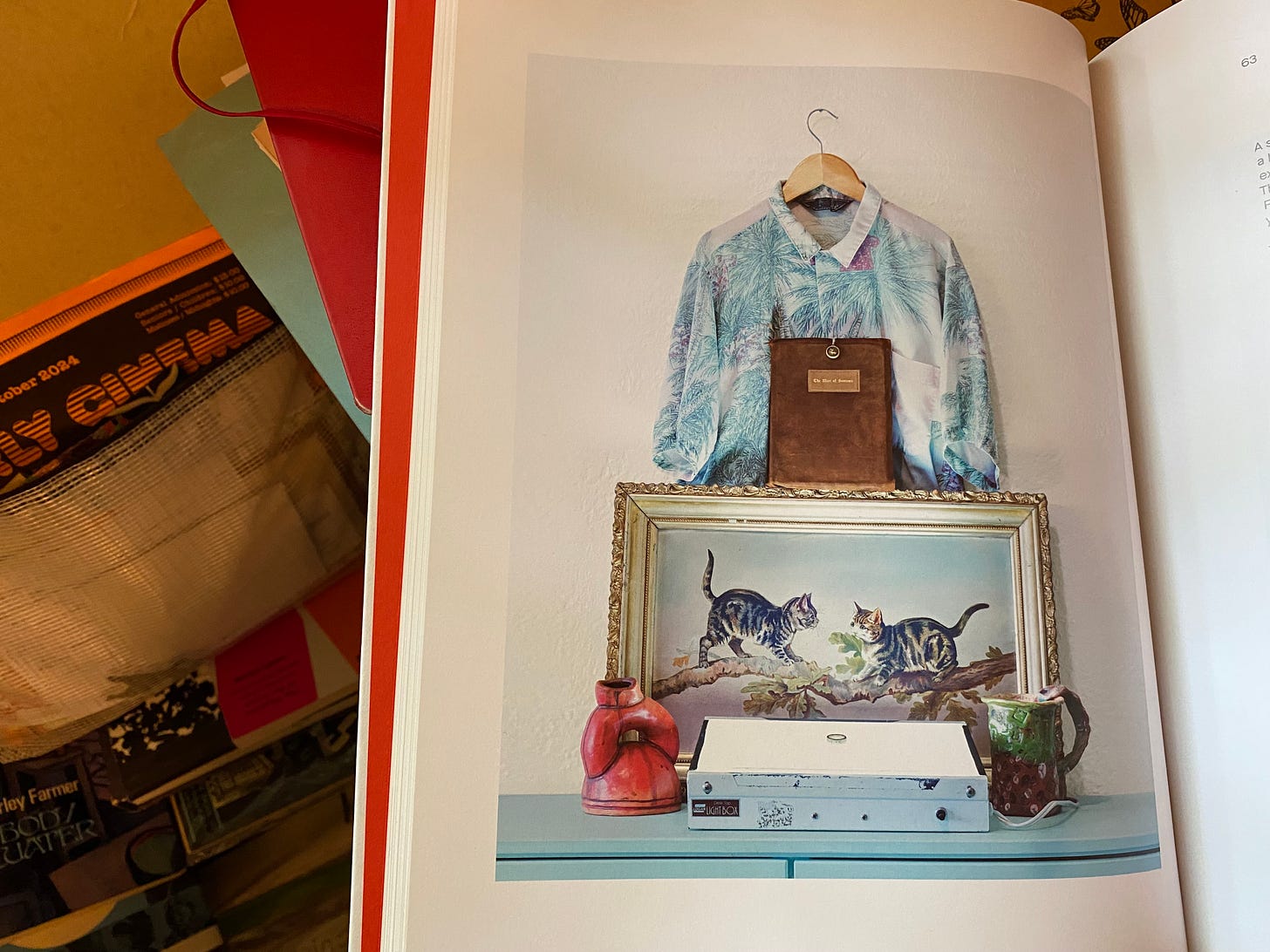
This collection could be objects bought in one afternoon, but we know it's a collection of someone's most precious, talismanic items. What's the significance of the shirt printed with shirts and palm trees? Who made the cumbersome pottery mug? Is the religious book ('The Man of Sorrows') an heirloom, or something the owner of this shirt printed with shirts reads for guidance? The text that accompanies it (by Jillian Steinhauer) is something like a tarot reading, with objects instead of cards: 'There's a freedom here to envision who you are and who you want to be. Freedom inherited or gifted or simply made by shaping material between your hands.'
Elsewhere this month
I’ve made a new issue of my zine Disposable Camera, written while I was at Lighthouse Arts last month and photocopied a few weeks ago, as I watched kids in back-to-school stationery shopping frenzies (I was touched this still occurs). If you'd like a copy send $5 to PO Box 1879 Strawberry Hills NSW 2012, or you can also order one on Etsy or contact me for Paypal.
I spent a weekend watching back to back episodes of The Young Ones and wrote a piece about the series for HiLoBrow: The Young Ones
If you're in Sydney I'm doing a talk at the State Library in March, about artistic responses to the city, for Portraits of a City, with Michael Kelly and Reg Mombassa.
And of course if you’d like to pre-order Calendar before its October release, you can visit the Upswell website.
Take care and I'll see you in the 90s (i.e. the end of March).


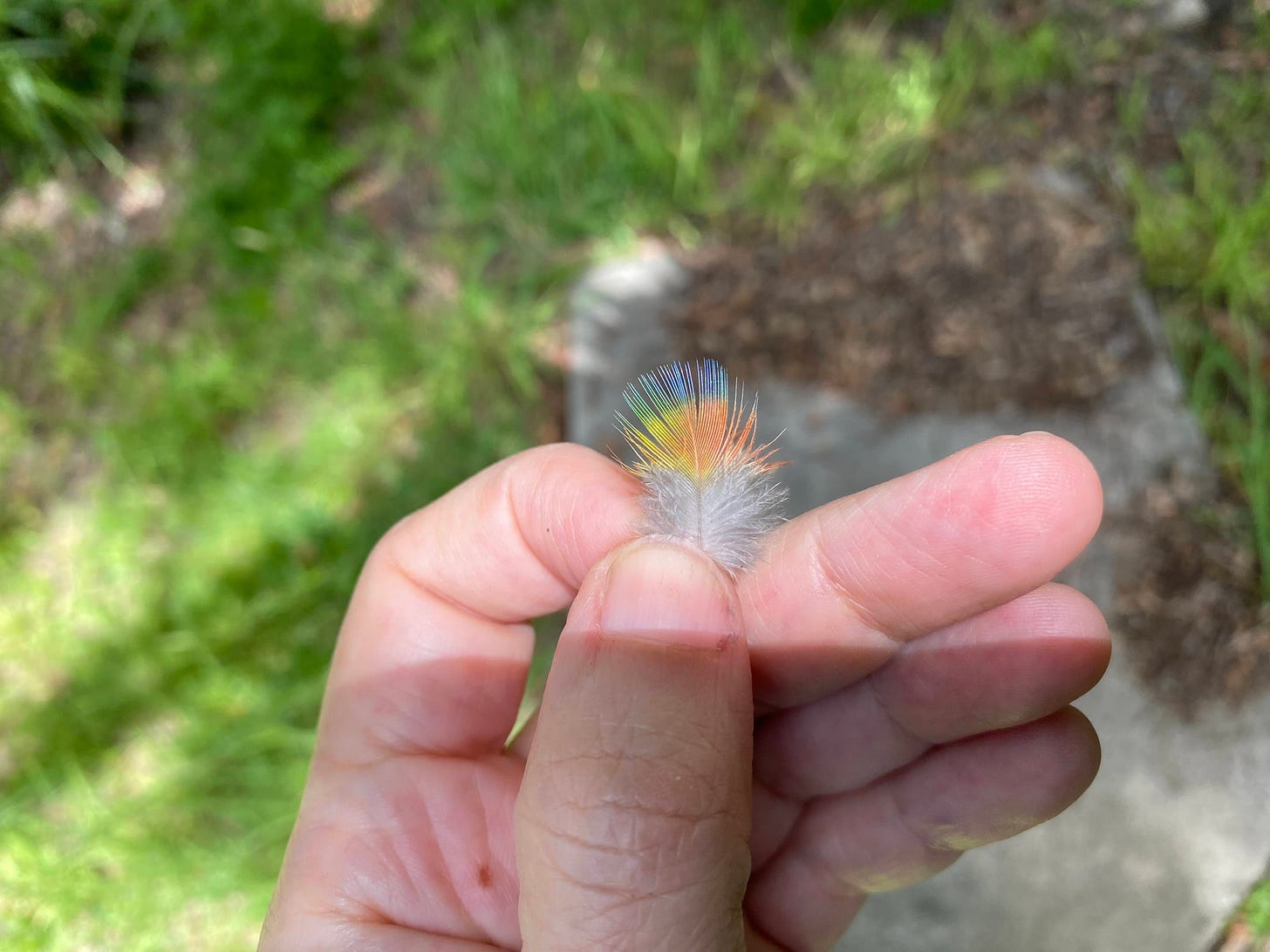
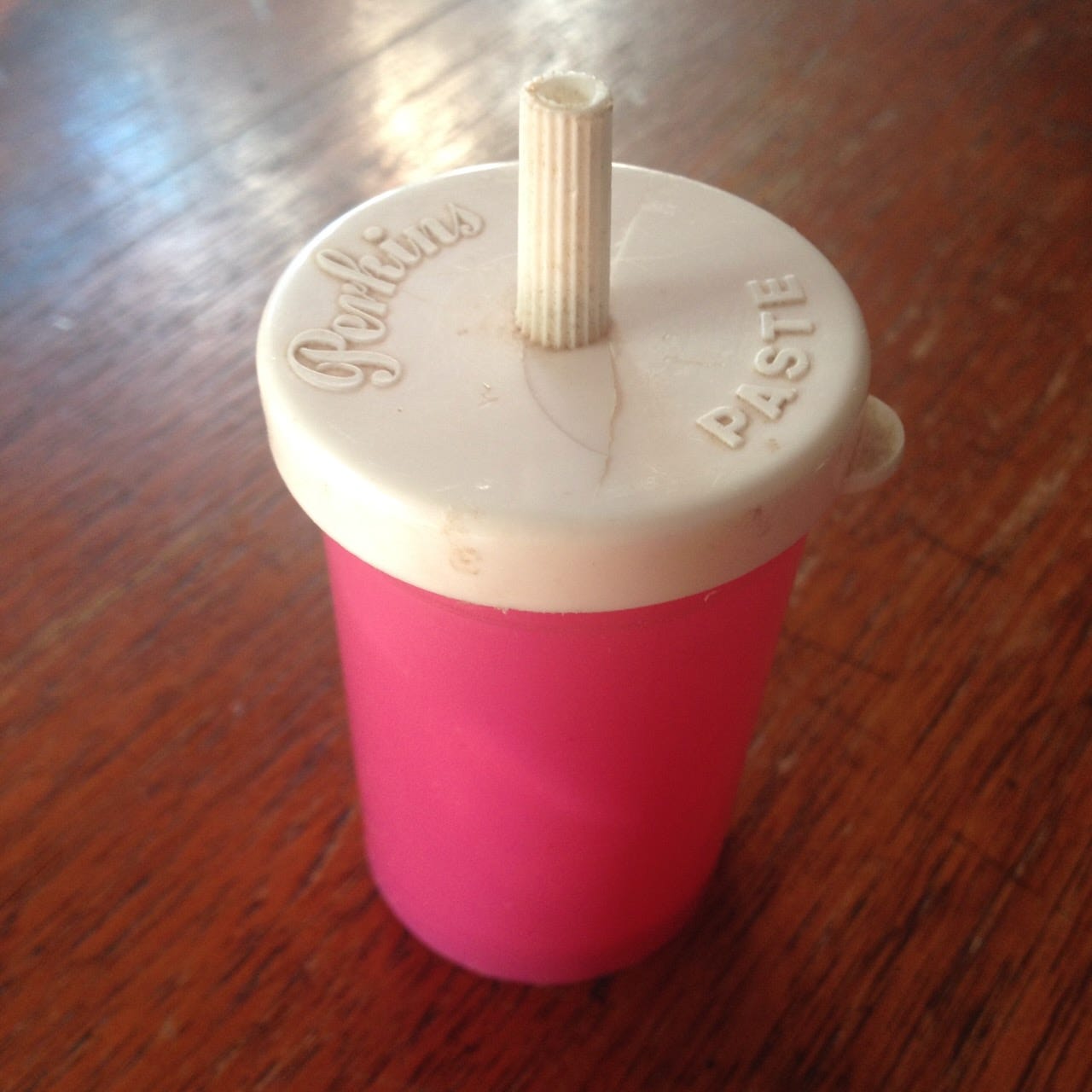
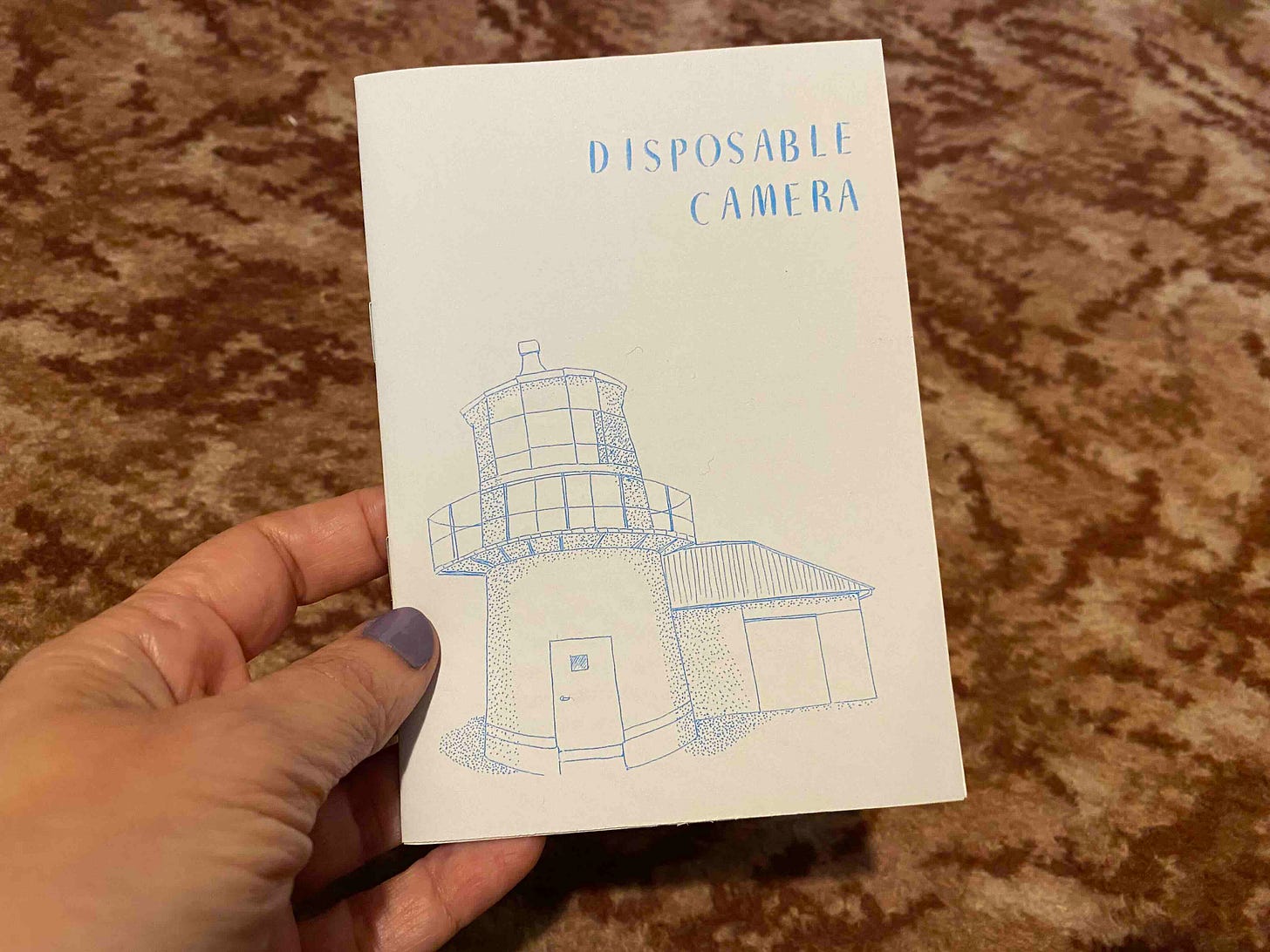
I never used Perkins Paste. But you did make me remember Clag (was it really called Clag? I feel like I can smell it) and my miraculous fave the UHu glue stick.
REMO have a page about their Perkins Paste relationship https://remosince1988.com/blogs/news/perkins-paste-design-story